Cabinets Styles
Kitchen Cabinet Styles
Whether you’re installing new kitchen cabinets or refurbishing old ones, the wide variety of styles can feel overwhelming. By exploring the most popular options and considering a few key tips, you can confidently choose the perfect cabinets for your home.
When choosing kitchen cabinet styles, your first decision is whether to align them with your home’s overall décor, create a subtle contrast, or take a bold departure. While the kitchen is a distinct space with its own function, it often reflects the home’s broader design style. For example, stepping from an Arts and Crafts-style living room into a sleek, modern kitchen might feel jarring. However, the only rule in home design is to ensure it feels right for you. Ultimately, the choice of how much harmony or contrast you want between rooms is entirely yours.
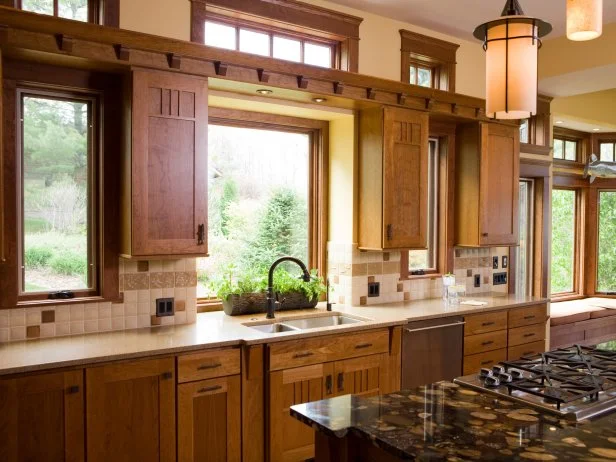
Cabinet Styles
Contemporary
Contemporary design is characterized by its sleek, minimalist aesthetic, creating a streamlined and clean appearance in your home. Contemporary kitchen cabinets typically feature flat surfaces and minimal ornamentation, avoiding the decorative trim or faux finishes often found in traditional styles.
While contemporary design reflects the current era, it often draws inspiration from its predecessor, modern design, known for its clean and unembellished style. To achieve this spacious, uncluttered look, contemporary cabinets forego crown molding and raised panels. Instead, they showcase flat surfaces with simple, sleek hardware and no additional decorative details.
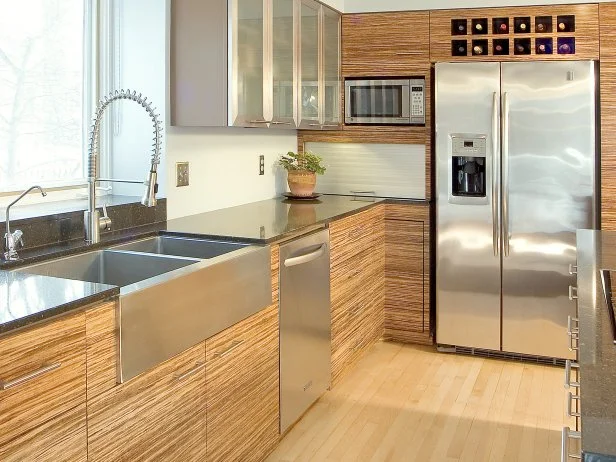
Modern
Modern kitchen cabinets are defined by their sleek, angular design and simple doors and frames. Recent trends in modern design often draw inspiration from midcentury modern furniture, known for its bold angles and curves. This influence extends to modern kitchen cabinetry, incorporating these distinctive shapes into the design.
Modern kitchen islands often complement this style with cabinets that echo the angular or curved aesthetic while featuring innovative storage solutions for cookware and dishware.
Modern kitchen cabinets often utilize man-made materials such as metal, plastic, concrete, and glass. Frosted or semi-opaque glass is a particularly popular choice, offering a sleek and contemporary look. Replacing old cabinet doors with frosted glass ones is an easy and affordable way to modernize your kitchen.
Modern cabinets may also feature wood veneer or plastic laminate finishes. For a distinctive modern style, consider wood veneer with an exaggerated horizontal grain. Additionally, mixed materials are a hallmark of modern kitchen design, combining elements like wood, laminates, glass, and metal to create a unique and dynamic aesthetic. Unlike traditional cabinets, which are typically made from a single wood type, modern designs embrace material diversity for a more personalized look.
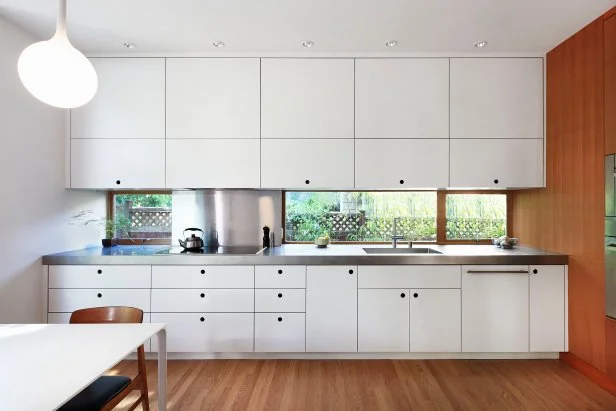
Rustic
Rustic and country kitchens, while part of traditional kitchen design, stand out for their casual, inviting atmosphere. Unlike traditional kitchens often designed for show, rustic kitchens are built for everyday use. Cabinets are typically crafted from durable materials like wood, with pine and oak being popular choices.
Pine is especially favored for its visible knots and grain, hallmark features of rustic cabinets. It is also affordable and widely available. However, pine is a softer wood and prone to dents and scratches. For greater durability, options like cherry, oak, maple, and hickory offer a wider range of colors and costs, making them ideal for heavily used rustic kitchens.
Color plays a key role in rustic country kitchens. Warm, natural tones that highlight the wood’s character are commonly used. Instead of glossy finishes, rustic cabinets often feature rugged or matte stains, emphasizing the wood’s natural beauty. Additional elements such as wide-plank wood floors, ceramic sinks, and hammered copper accents complement the rustic aesthetic.
For countertops, materials like soapstone, honed granite, and butcher block pair beautifully with rustic wood cabinets, enhancing the cozy, homey feel of a country kitchen.
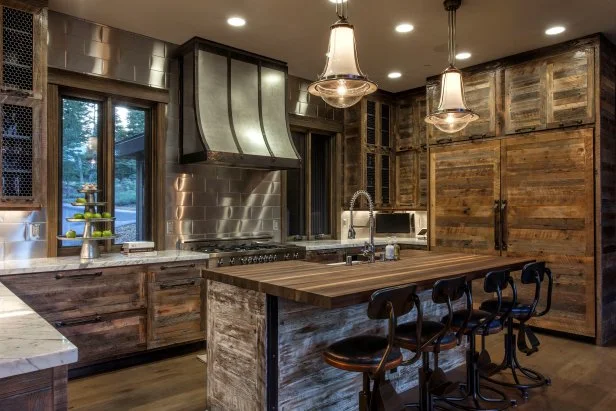
Shaker
Shaker design traces its origins to a religious movement from the 1770s in colonial America, emphasizing simplicity and functionality over decorative flourishes. Despite their traditional roots, the clean, simple lines of Shaker cabinets make them a versatile choice for both modern and contemporary kitchen designs.
Key features of Shaker kitchen cabinets include flat-paneled doors with rail frames, sturdy construction, and a focus on practicality. These cabinets are often crafted from high-quality American hardwoods traditionally sourced from the northeastern United States, such as cherry, maple, hickory, and quartersawn oak.
Shaker cabinets are typically finished in natural wood tones or stained to enhance darker hues, showcasing the wood’s beauty. White and gray-painted Shaker cabinets are particularly popular in modern kitchens, offering a light, airy aesthetic sought after by contemporary homeowners. They are often paired with white or light granite countertops, stainless steel appliances, and sleek modern hardware to complete the look.

Country
Country kitchens are designed for practicality and everyday use, which is why cabinets are typically crafted from durable, long-lasting materials like wood.
Popular wood choices for country-style kitchen cabinets include cherry, oak, maple, and hickory. These woods offer a range of colors and price points and are more durable than pine, making them better suited for heavily used kitchens.
Painting and glazing are common finishes in country kitchens, with charming colors like butter yellow, cream, mint green, or light blue being popular choices. To enhance the rustic country aesthetic, techniques such as distressing, milk paint, or glazes can be applied over the paint, adding character and charm to the cabinets.
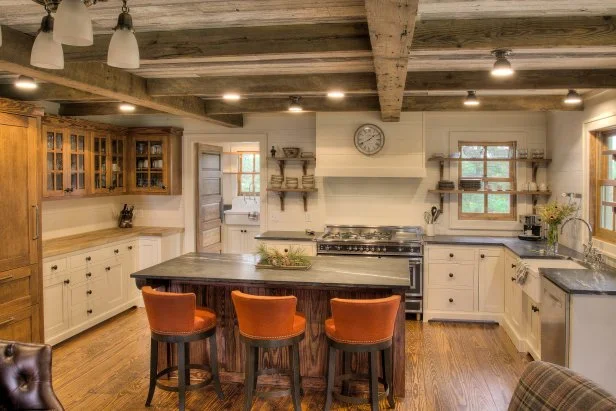
Mission-Style
Mission-style design has significantly influenced the Arts and Crafts movement in kitchen cabinetry, while also blending elements from Spanish and American Southwest aesthetics.
Defined by straight lines and panel-faced doors with minimal adornment, Mission-style cabinets emphasize simplicity and functionality. The most commonly used material is oak, particularly American white oak, valued for its durability and natural beauty. Cherry wood is also occasionally used, offering a more refined and robust option. These cabinets are typically crafted by skilled carpenters, resulting in a sturdy and long-lasting design. However, this emphasis on custom craftsmanship and high-quality materials can make Mission-style kitchens a more expensive choice. Despite the higher cost, the timeless elegance and durability often justify the investment.
Mission-style cabinets are usually left in their natural wood state, showcasing warm honey tones or enhanced with stains to deepen the hue. Rather than being painted, the wood’s natural beauty is prioritized. Decorative hardware is typically black, crafted from materials like wrought iron, rubbed brass, or bronze, adding a touch of rustic charm to the overall design.
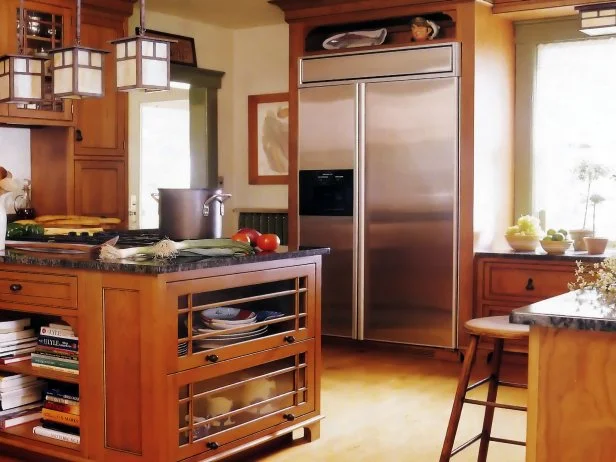
French Country
In French country kitchens, cabinet hardware is typically ornate, often crafted from antique brass, bronze, or iron. For an authentic touch, leaded glass or wire grille inserts can be added to cabinet doors. Additionally, rustic beadboard can be incorporated into cabinetry to enhance the casual, lived-in charm.
Many French country kitchen cabinets feature unique finishes, such as distressing or antiquing, which may require custom-made cabinetry for an authentic look. However, due to the growing popularity of the French country style, many cabinet suppliers now offer stock and semi-stock options, making this timeless aesthetic more budget-friendly.
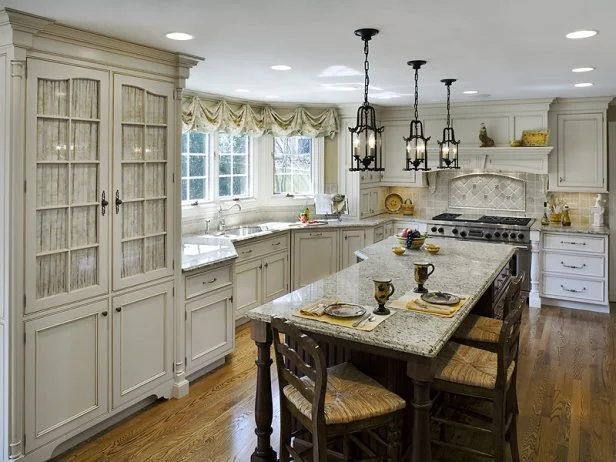
Retro
Retro kitchen cabinets, especially when paired with vintage appliances and accessories, create a distinctive and creative space that reflects the homeowner’s personality and style.
One of the most popular retro cabinet designs today is midcentury modern. This style, with its vintage appeal, has made a comeback in many contemporary kitchens. Midcentury modern design is characterized by streamlined, angular lines and bold geometric shapes, resulting in sleek, functional cabinetry. These cabinets tend to have a minimalist look, focusing on solid construction and practicality rather than excessive ornamentation. Available in a range of colors, midcentury modern cabinets can now be found in many home improvement and design stores, making this timeless style accessible for modern kitchens.
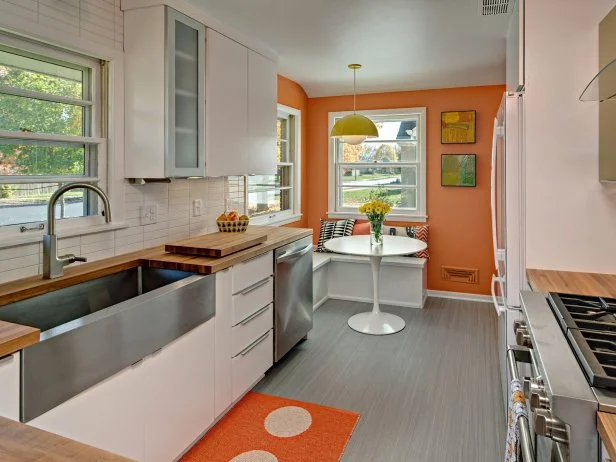
Tuscan
Tuscan kitchen cabinets are typically crafted from high-quality woods like cherry or maple, often stained in rich brown hues to create a natural, yet sophisticated elegance. These cabinets usually feature raised-panel doors with decorative wood accents, such as ornate hoods, shelves, and cornices.
Glass-paneled doors are often incorporated into corner cabinets, and cabinet underlighting is a popular addition in Tuscan kitchens. To enhance the Mediterranean feel, metals such as ornate iron, bronze, copper, and brass are used alongside the wood cabinetry. Rustic or Italian-style tile work is commonly seen in Tuscan kitchens, beautifully complementing the warm tones and intricate details of the wood cabinets.
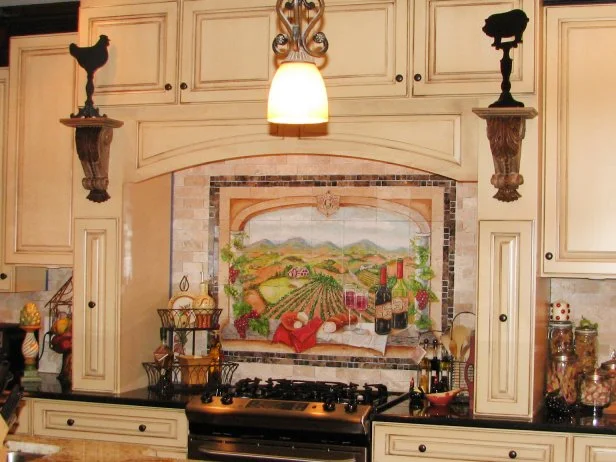
Craftsman-Style
Craftsman-style kitchen cabinets are known for their simple, straight lines, high-quality construction, and minimal ornamentation. Originating from the Arts and Crafts movement at the end of the 19th century in England, this design was a reaction against the overly decorative, mass-produced furniture of the time. It emphasized the value of quality craftsmanship by individual artists and woodworkers.
Today, Craftsman-style kitchen cabinets retain the same focus on functional, sturdy design. They are typically crafted from durable hardwoods like quartersawn oak, hickory, cherry, or maple. Authentic Arts and Crafts cabinets are always made from solid wood, avoiding the use of artificial materials, to maintain the integrity of the original style.

